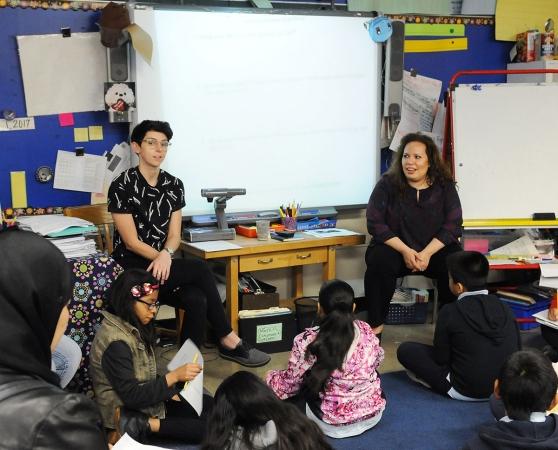Tips and resources for educators of newly arrived ELL students

The UFT has compiled a selection of tools, resources and tips to help educators support newly arrived English language learners. While this list is by no means comprehensive, the guidance and ELL strategies below can be integrated into your curriculum to benefit the newcomers in your classroom.
Professional Learning
Colorín Colorado is the premier website for ELL educators and families. It includes videos and articles that can be used by individuals or by school level professional development teams in planning professional learning. You may find these resources from their website particularly helpful:
- Supporting Newcomer Students
- How to Create a Welcoming Classroom Environment for ELLs
- How to Support ELL Students with Interrupted Formal Education (SIFE)
- How Schools Can Partner with ELL Families Who Resettle in their Community
- ELL Literacy Tutoring: Resource List
CUNY's Initiative on Immigration & Education offers asynchronous and synchronous professional learning on topics such as Translanguaging for Multilingual Immigrant Students, Trauma-Informed Practice and Teaching Immigration in Elementary and Secondary Schools.
Instructional Resources
- DOE Division of Multilingual Learners instructional resources and professional learning for newly arrived ELLs, including a link to resources for Students with Interrupted Formal Education (SIFE)
- Colorín Colorado - Common Classroom Phrases in Spanish
- Updates on NYC instructional resources and professional learning opportunities through the NYCDOE’s newsletter, Multilingual Monthly (click to subscribe)
- Scaffolding Instruction for Multilingual Learners and English Language Learners, K-12 from the DOE's Division of Multilingual Learners
- NYU Steinhardt - Bilingual glossaries and cognates, listed by grade and content area
- Workbooks for Passport to Social Studies may be ordered in multiple languages
- ReadWorks - Reading passages for ELLs by grade level
- Newsela offers leveled texts in English and Spanish with read-aloud capability,
- Starfall online resources on decoding in English: Alphabet and printable worksheets; Learn to Read with printable workbook
- Bridges to Academic Success offers free curricula and professional learning to support newly arrived ELL students with interrupted formal education (SIFE) in ELA, ENL and math, grades 6-12.
- DOE TRANSLATE Foundation Unit covers phonics and decoding skills for ELLs in the secondary grades.
Social Emotional Learning Resources
Colorín Colorado also offers resources for supporting the social-emotional needs of newly arrived students:
- How to Provide Social-Emotional Support for Immigrant Students
- How to Support the Social and Emotional Health of Middle/High School ELLs
- SEL for English Language Learners: What Educators Need to Know
- How to Welcome a New Student, written by 3rd-graders at PS 212Q
Helpful Tips for Teaching New Arrivals
- Recognize that there may be a silent period and that students will be able to comprehend more language than they can produce.
- Assign a “buddy” who speaks the home language. (Note that it is not the peer’s role to translate all instruction!)
- Speak at a slower, but still normal, pace and provide more wait time when asking students to respond.
- Use gestures and facial expressions.
- Provide a visual for the lesson topic and key vocabulary.
- Provide a video preview of content (e.g., BrainPOP, TeacherTube).
- Assign active roles in the classroom (e.g., photographer, timekeeper).
- Encourage use of home language during class activities, both oral and written.
- Allow responses using visuals/video/recordings in English or the home language.
- Provide word banks, sentence and paragraph frames.
- Use differentiated questioning to elicit responses according to proficiency level (e.g., yes/no; one word; short phrase; full sentence).
- Use translation apps, but not for all activities.
- Encourage newcomers to write/draw about themselves and their experiences.
- Provide frequent brain breaks.
- Be patient with your student and yourself – acquiring a new language takes time and effort!